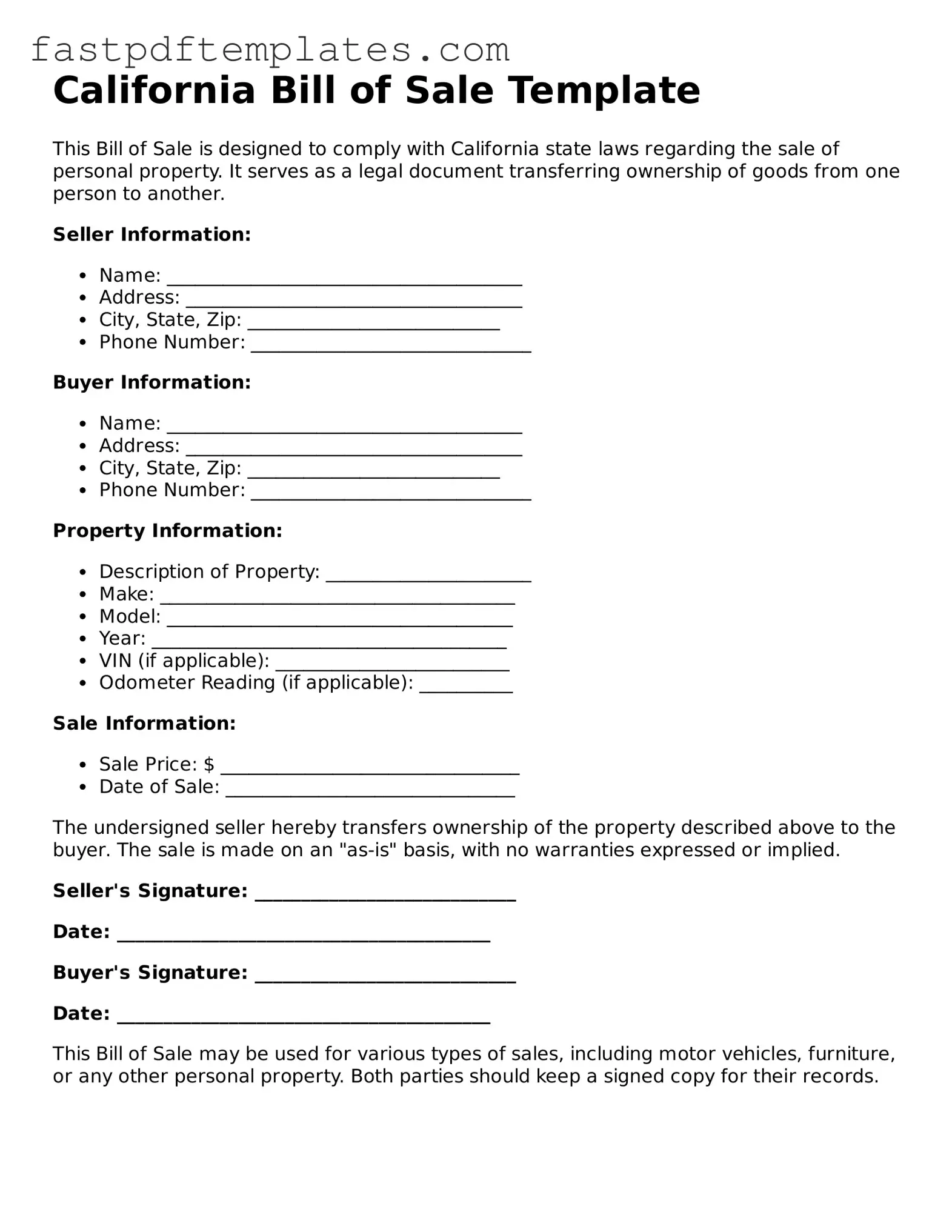California Bill of Sale Template
This Bill of Sale is designed to comply with California state laws regarding the sale of personal property. It serves as a legal document transferring ownership of goods from one person to another.
Seller Information:
- Name: ______________________________________
- Address: ____________________________________
- City, State, Zip: ___________________________
- Phone Number: ______________________________
Buyer Information:
- Name: ______________________________________
- Address: ____________________________________
- City, State, Zip: ___________________________
- Phone Number: ______________________________
Property Information:
- Description of Property: ______________________
- Make: ______________________________________
- Model: _____________________________________
- Year: ______________________________________
- VIN (if applicable): _________________________
- Odometer Reading (if applicable): __________
Sale Information:
- Sale Price: $ ________________________________
- Date of Sale: _______________________________
The undersigned seller hereby transfers ownership of the property described above to the buyer. The sale is made on an "as-is" basis, with no warranties expressed or implied.
Seller's Signature: ____________________________
Date: ________________________________________
Buyer's Signature: ____________________________
Date: ________________________________________
This Bill of Sale may be used for various types of sales, including motor vehicles, furniture, or any other personal property. Both parties should keep a signed copy for their records.
